
This picture can rightly be called a group portrait. Unlike Bal in Moulin de la Galette, the scale of the figures is enlarged here, all of them are portrait and recognizable and constitute the main content of the picture.
The landscape that surrounds the terrace where friends have gathered, the greenery around, the hay seen through it with the running sailboats and boats make up the atmosphere of the picture, its joyful background. It contains all the participants of the meeting, who gathered at the tables set by the wine and fruit in the Fournaise restaurant in Chatou. He stands here himself, with his back and his hands on the railing of the terrace, a strong, confident man wearing a sleeveless shirt exposing his strong arms. In front of him, at the table sits a charming girl, who sat in front of her on the table a small fluffy little dog and amused herself by playing with her.
Renoir presented to the audience Alina Sherigo, who at that time was a little more than twenty years old and with whom he would finally connect his life in 1881, although the official registration of their marriage would take place only in 1890. In the painting “Breakfast of the Rowers” Alina Sherigo at a flourishing age, not yet fully associated with Renoir, delights him with his youth and carelessness. Opposite her, saddling a chair, Kaibott, an engineer, a collector, an amateur artist and a passionate rower, settled down to face Alina. He helped the Impressionists a lot, collected a collection of their works and bequeathed it to the Louvre. Renoir, he asked to fulfill his will.
Next to Caibotte, Renoir wrote an Italian journalist, Maggiolo. And behind them were standing and sitting Baron Barbier, who had recently returned from Indochina, according to Jean Renoir, who had taken the trouble to assemble the models for this picture, Efrussi, Lot, Lestrange, Jeanne Samary, the model Angel, who was then married, and the children of the owner Alfonsina restaurant and Alphonse Furnes. Particularly charming is the young Alfonsina Fournaise in a yellow straw hat, written against the backdrop of bright greenery.
Before us, in essence, a large group portrait, which differs from those similar to it on the subject and plot, by the absence of any ceremonial and pompousness, the desire to somehow embellish or exalt the portrayed. All are presented in natural, as if random poses, at ease, without any desire to please the audience. In contrast to the “Ball in Moulin de la Galette” all the characters are portraits, recognizable, written clearly, sculptural, tangible.
In the picture there are a lot of light, white and yellow tones, which together with blue, violet and dark colors create a common color. Renoir is not trying to convey the unsteady effects of sunlight, as he did several years ago, more strictly following the transfer of the very scene of the picture – the terrace covered with a dense striped awning. However, this does not prevent us from feeling in the overflow of colors as if the oscillation of the air penetrating the river landscape. This picture was a landmark in the works of Renoir.
At this time, in 1880-1881, he is full of life, makes the first long journeys to Algeria and Italy, sums up some of his creative work and already in Italy is disappointed in something, but wants to actively change something in his art. There comes a period of new searches, new doubts, a new painting style. “Rowers’ Breakfast” turned out to be at the center of his creative and life journey.
 Luncheon of the Boating Party by Pierre Auguste Renoir
Luncheon of the Boating Party by Pierre Auguste Renoir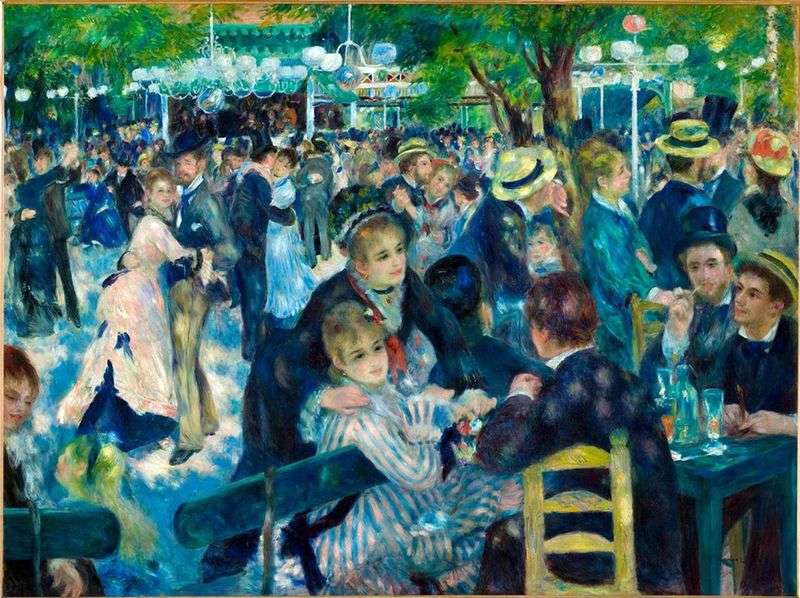 Dancing in Moulin de la Galette by Pierre Auguste Renoir
Dancing in Moulin de la Galette by Pierre Auguste Renoir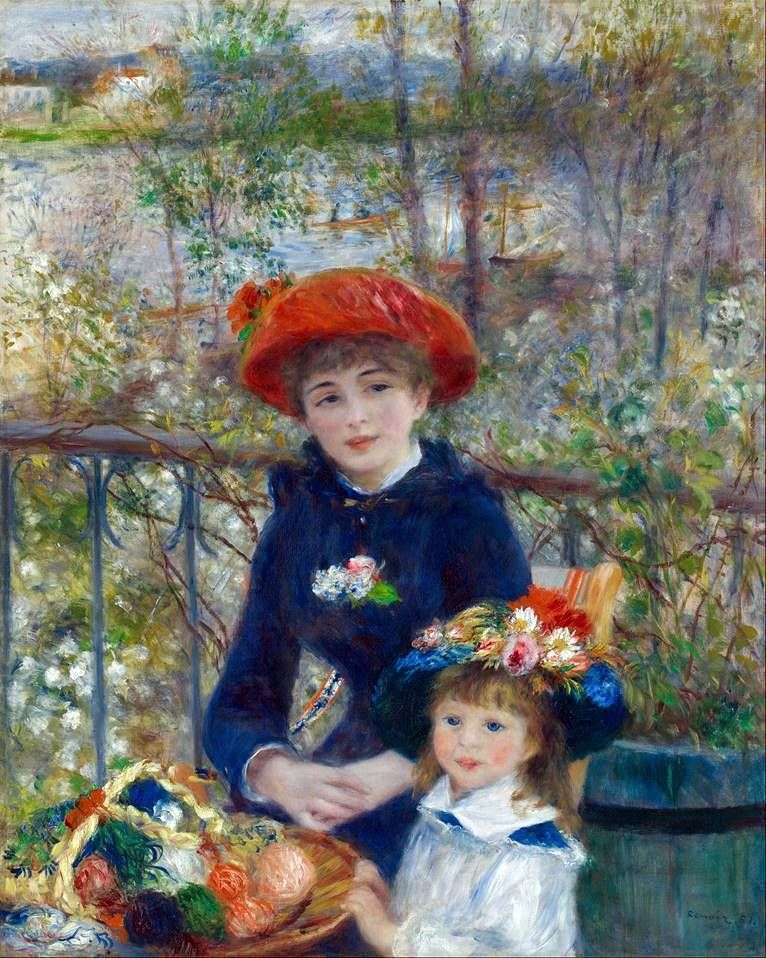 On the terrace (Two Sisters) by Pierre-Auguste Renoir
On the terrace (Two Sisters) by Pierre-Auguste Renoir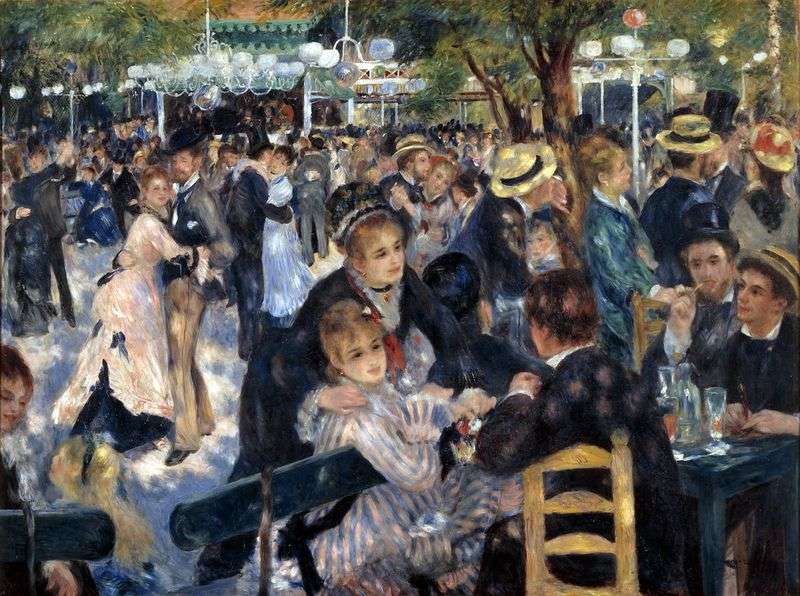 Ball in Moulin de la Galette by Pierre Auguste Renoir
Ball in Moulin de la Galette by Pierre Auguste Renoir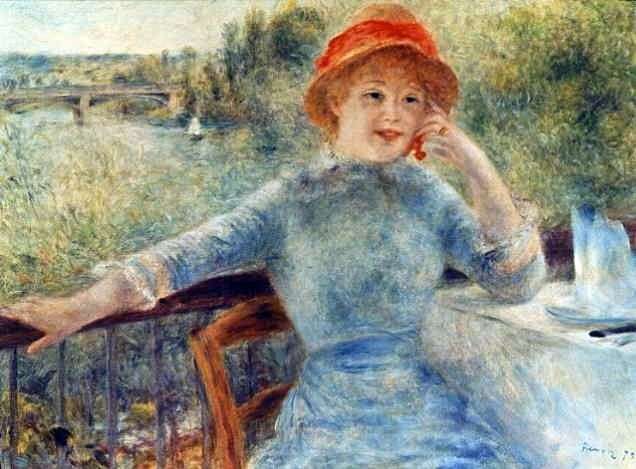 Alfonsina Furnes by Pierre-Auguste Renoir
Alfonsina Furnes by Pierre-Auguste Renoir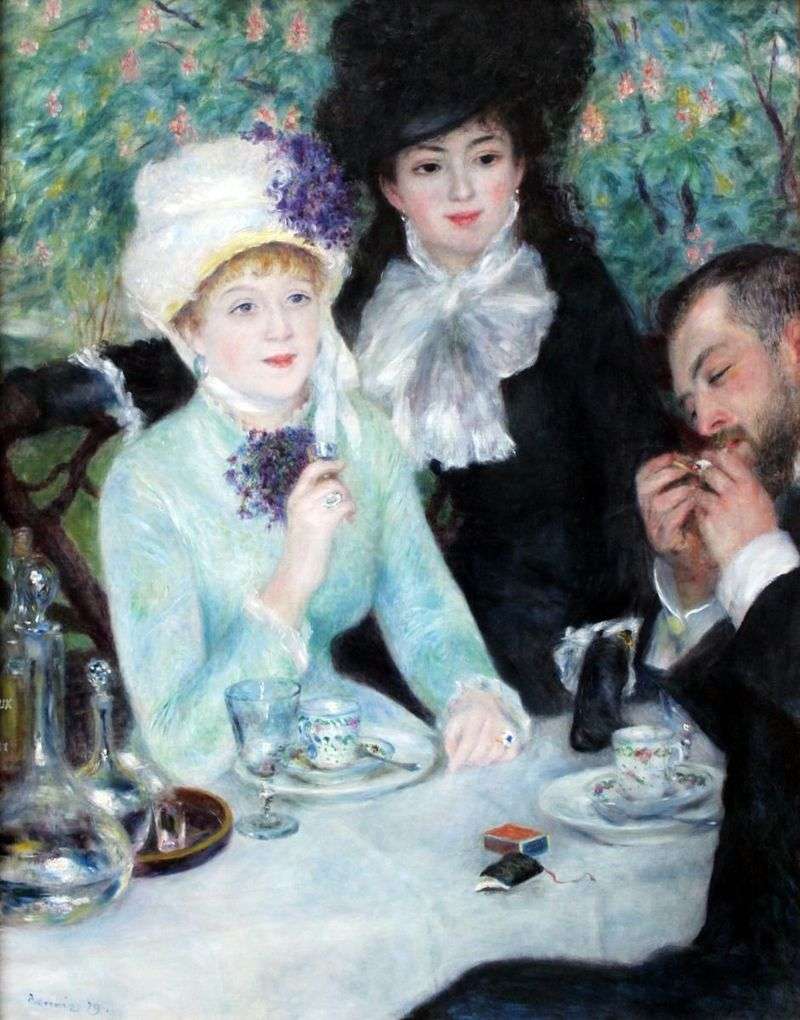 After breakfast by Pierre Auguste Renoir
After breakfast by Pierre Auguste Renoir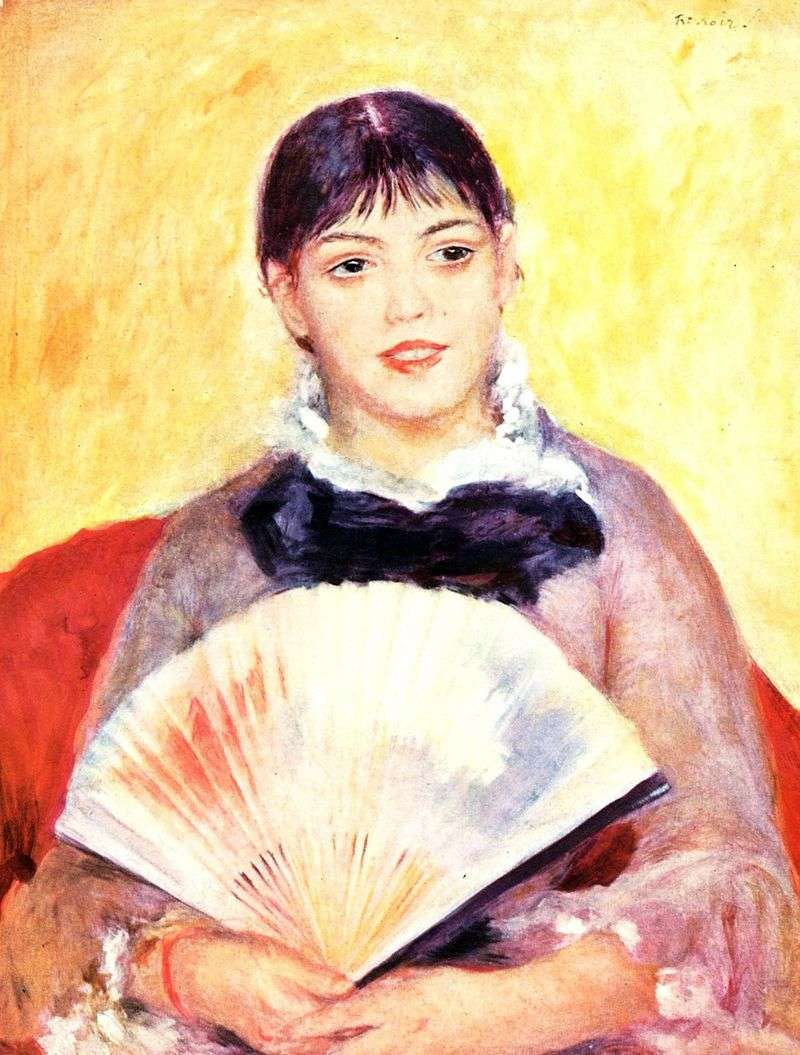 Girl with a Fan by Pierre Auguste Renoir
Girl with a Fan by Pierre Auguste Renoir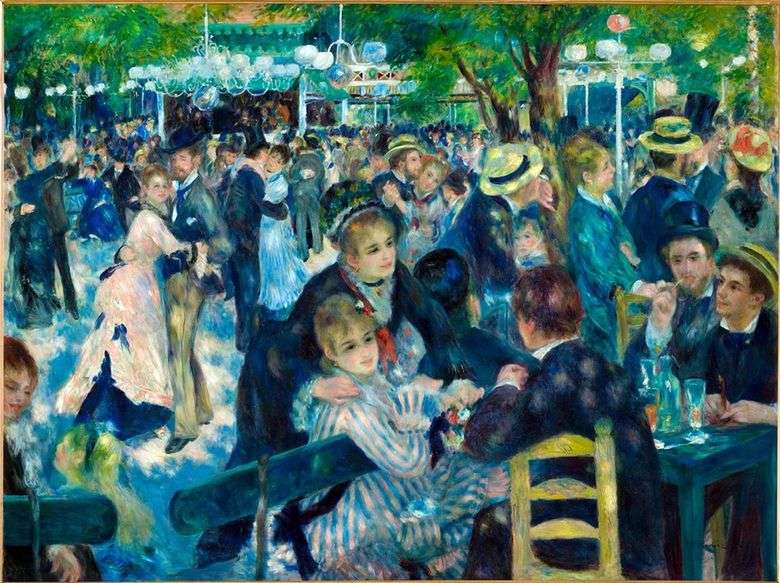 Bailando en el “Moulin de la Galette” – Pierre-Auguste Renoir
Bailando en el “Moulin de la Galette” – Pierre-Auguste Renoir